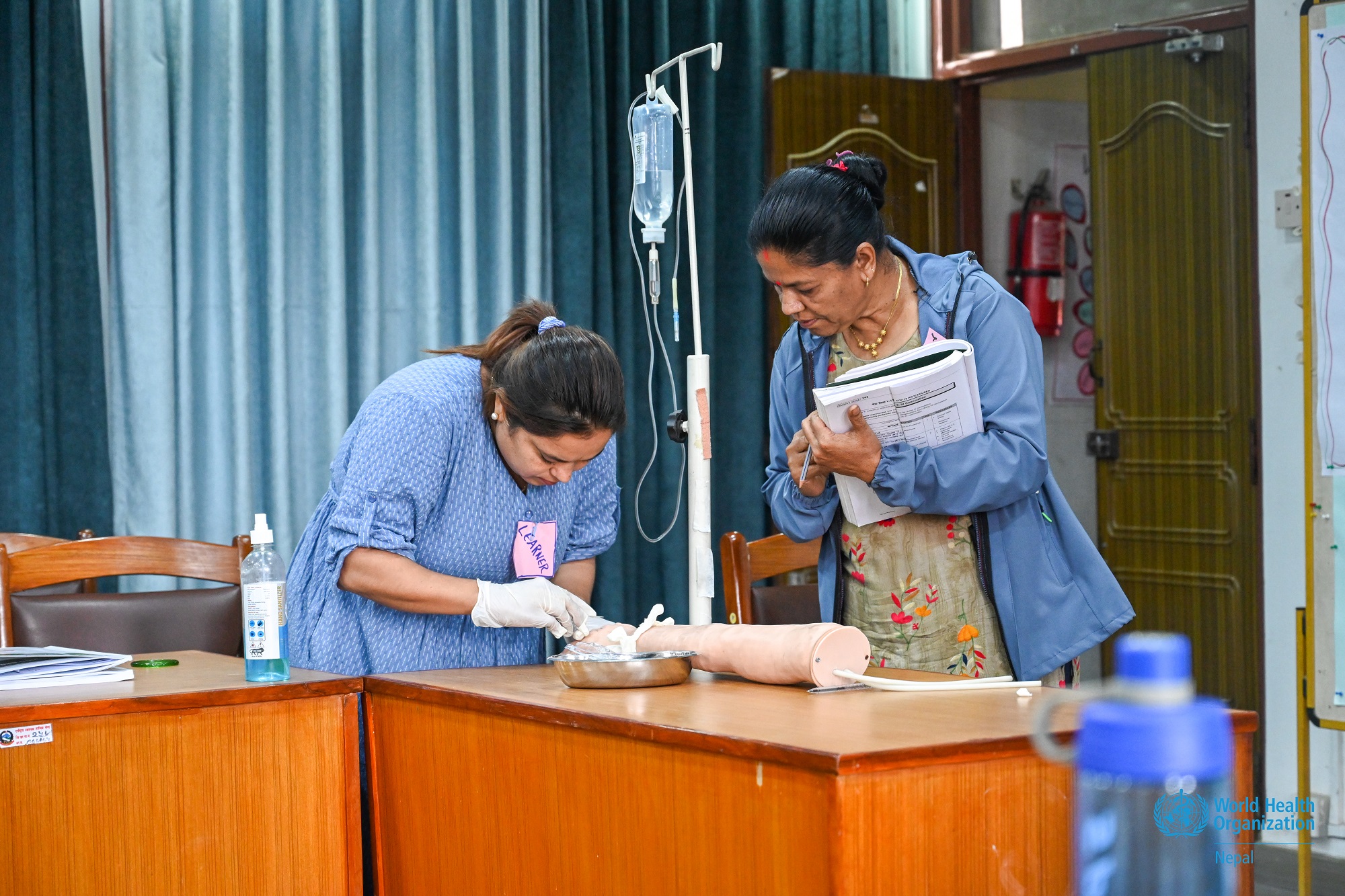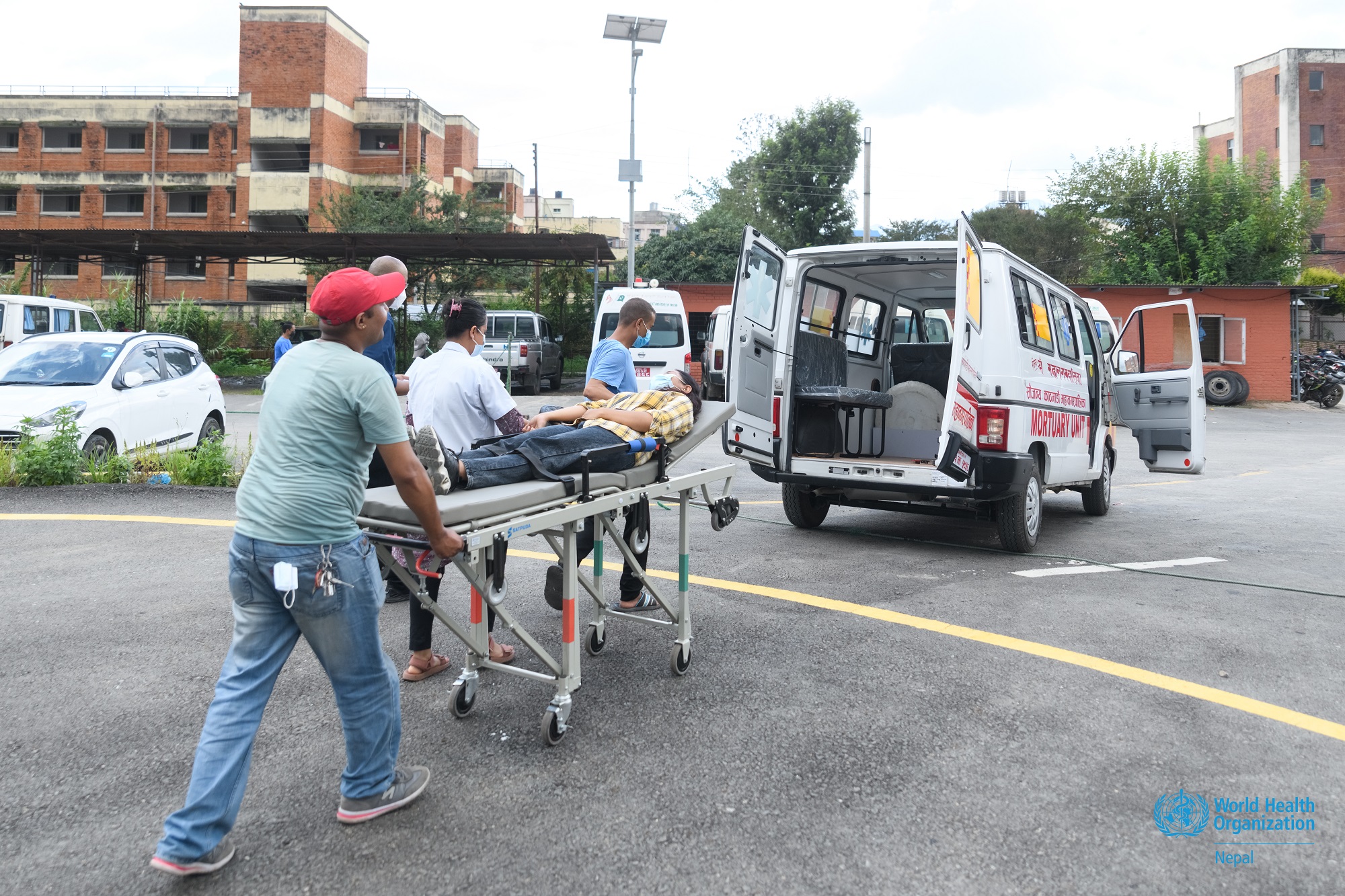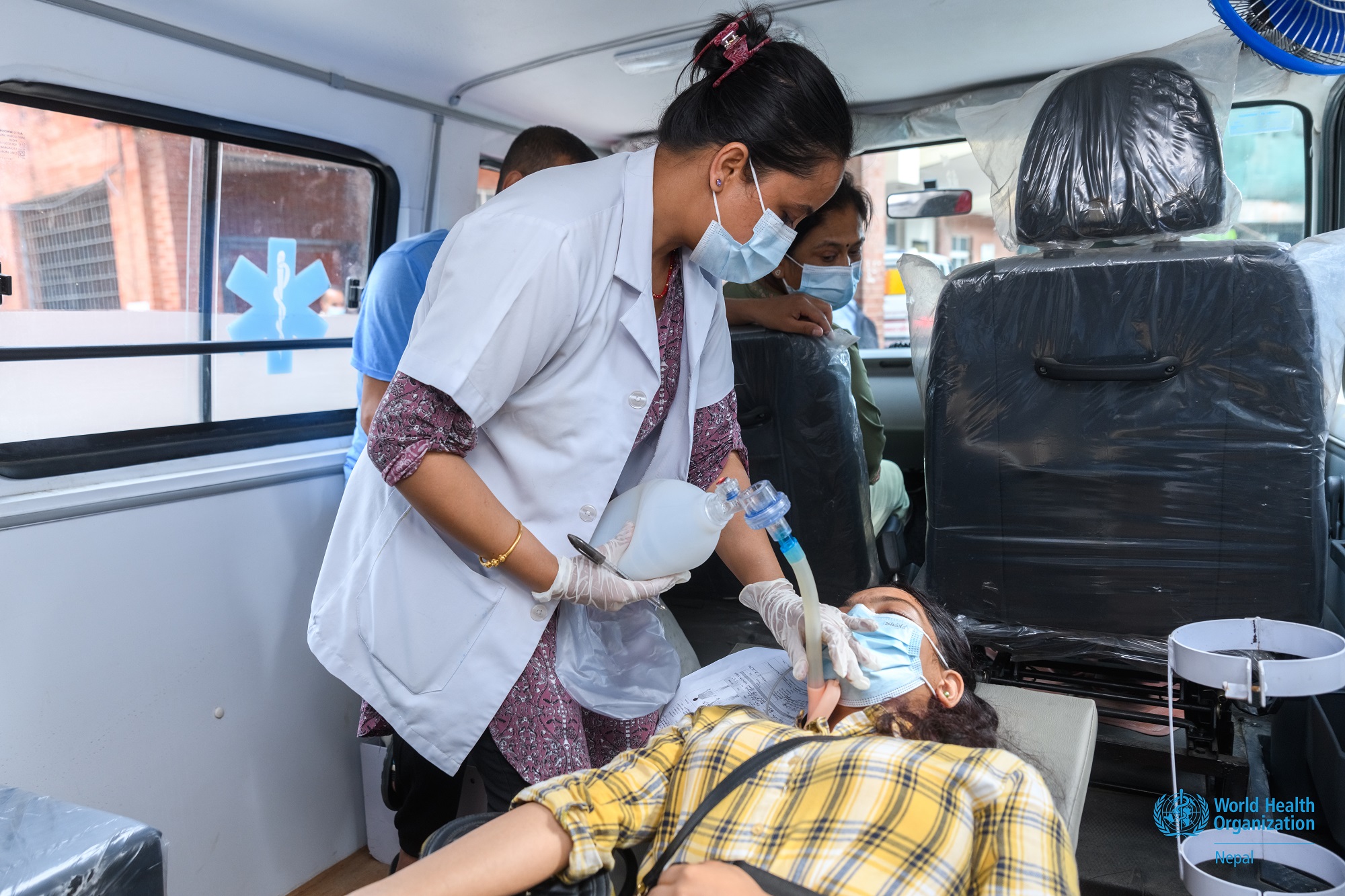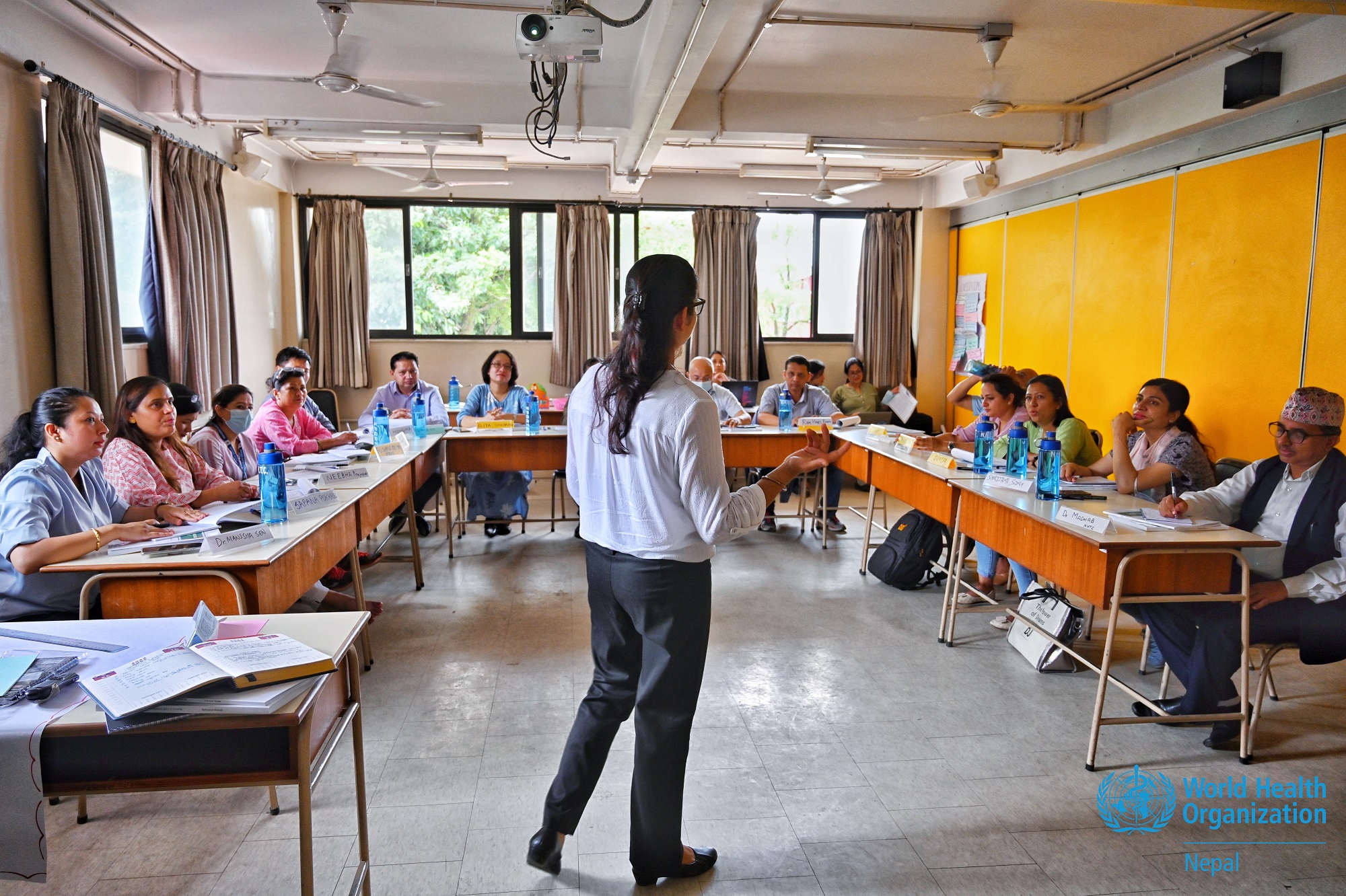Aligning with the Ministry of Health and Population (MoHP)'s calls for the need to have a Basic Emergency Medical Technician (BEMT) in every ambulance that reaches trauma and non-trauma patients, the National Health Training Centre (NHTC), with support from WHO, Country Office for Nepal, has conducted a training of trainers (ToT) for BEMTs.

A glimpse of the BEMT ToT held at NHTC, Bagmati Province, Nepal. Photo Credit: WHO Nepal/S.G.Amatya
The program held in two batches from 6-10 July and 18-22 July trained a total of 32 healthcare workers and doctors representing COVID-19 treating hospitals and health workers with prior experience in providing pre-hospital and emergency care. These certified trainers will now go on to provide BEMT training to other health workers at the provincial level.
Trained BEMTs are essential to ensure efficient and immediate care to critical patients while they're being transported to the medical facility to better manage acutely ill patients, especially COVID-19 cases, and reduce mortality rates. This training provides the necessary skills and knowledge on basic emergency lifesaving procedures.

A glimpse of the mock drill to train BEMTs held at Tribhuvan University Teaching Hospital (TUTH), Bagmati Province, Nepal. Photo Credit: WHO Nepal/A. Maharjan
The National Ambulance Guideline 2021 also mandates that ambulances need to have a BEMT to receive a functional ambulance license.
With the trainings being rolled out at the provincial level in the next couple of months, it is expected that around 128 BEMTs will be trained in total through this program, which is being implemented with technical support from WHO and financial support from the EU Civil Protection and Humanitarian Aid (ECHO). NHTC has also identified the training sites to conduct the next batches of BEMT trainings in the provinces.

A glimpse of the mock drill to train BEMTs held at TUTH. Photo Credit: WHO Nepal/A. Maharjan
With modules that focused on effective teaching modalities in order to increase learning efficacy, the ToTs strengthened the participants’ prehospital care knowledge, attitude, and practices. Instructional skills, lesson plans, and training management steps for future trainees were also covered. Practical sessions, which included role-playing sessions and skill transfer sessions were also recorded so participants could revisit it, provide feedback to each other, and better their skills.

A glimpse of the role-playing sessions held during the BEMT ToT at NHTC. Photo Credit: WHO Nepal/S.G.Amatya
“The decision of the MoHP to have a trained BEMT in ambulances is a praiseworthy move. With the support of WHO, NHTC will train as many as possible BEMTs so that every ambulance that runs in the country has skilled manpower to save lives while transferring patients to the hospital”, stated Dr Yadu Chandra Ghimire, Director for NHTC.
Referring to the WHO Emergency Care System Framework as a key resource for the course development, NHTC, under MoHP, finalized the learning resource package for BEMT. The framework, designed to support policy-makers to assess or strengthen national emergency care systems, captures essential emergency care functions at the scene of injury or illness, during transport, through to the emergency unit, and early inpatient care.

A glimpse of the first batch of trainers at NHTC. Photo Credit: WHO Nepal/S.G.Amatya
“By creating a pool of trainers, we have enabled an environment where more people can be trained on BEMT which is a crucial component to strengthen the pre-hospital care pathway. Too many patients lose their lives due to lack of critical care en route to hospitals," says Dr Rajesh Sambhajirao Pandav, WHO Representative to Nepal. “If we can have a BEMT at every ambulance that transports patients in Nepal, we can definitely help save many lives.”
